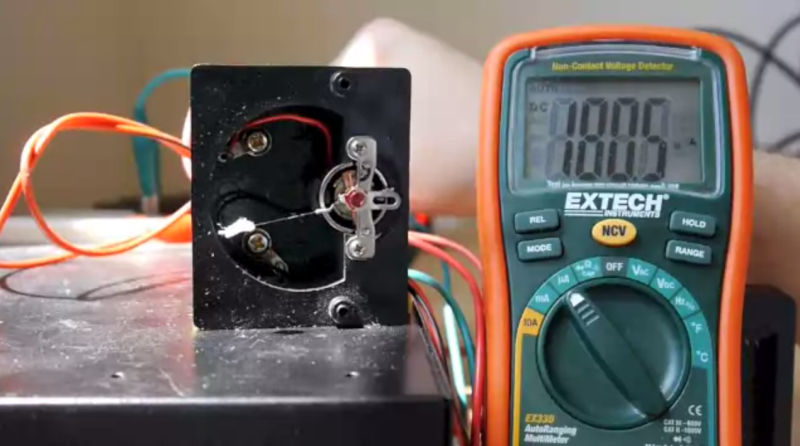With the holiday season upon us, it is useful to be able to determine just how much (or how little) spiking the office party punch has received. [Russell Smith] shows how he tried to determine the proof level of booze using a microbalance made from an old-fashioned panel meter.
That might seem odd, but since alcohol evaporates faster than water, you can plot the change in evaporation rate if you have a good enough scale. That’s where the microbalance comes in. The idea is to weight down the needle of an old meter and measure the amount of current it takes to get to a certain deflection. His results weren’t totally satisfactory, but his methods were interesting.
[Russell] first tried the meter with a power supply and a voltmeter to see how it would work. It did well, but you had to be sure you put the sample in the same spot each time and measured the same deflection. He automated the process using an Arduino and an IR sensor. Although his data showed some correlation to alcohol content, he wasn’t able to get repeatable readings using soaked cotton swabs.
If you want a microbalance that is more polished, there’s an open one out there. If the booze part is more interesting, you might check out the Zymeter.
















Nice, although in this day and age, food alteration might be a bad idea.
… What?
what does this even mean? like in another day and age it was OK to put stuff in people’s food without telling them, and that was good? I have so many questions.
Have you really never heard of ‘spiking the punch bowl’?
My guess is that Padrote is implying that is was never a good idea to spike the punch bowl, regardless of day or age.
>”I made a quick pass at implementing PID control, but the digital-only feedback and relatively slow response made it difficult to find parameters that would allow the needle to settle. Since I didn’t want to spend all day tuning control algorithms, I had to leave this part of the project for another time.”
That IR-gate has a linear region where the current through the transistor changes linearily when the object blocking the gate moves over a distance of about a millimeter. It can be used as a displacement sensor instead of on/off gate.
Furthermore, since the microcontroller input pin has hysteresis for state change. The needle has to move further up to change it from 0 to 1 than the other way around.
The easy way to do it would be to use an op-amp which amplifies the signal coming from the gate, feeding the coil such that when the gate starts to close it quickly ramps up the voltage. Monitoring the voltage then tells you what the load is.
Extend the needle and Increase the sensitivity.
Some of the most sensitive scales use this same technique, all be it a little more refined.
The load needs to hang in order to stop the moment changing because of length and the whole thing needs to be in a controlled temperature oven.